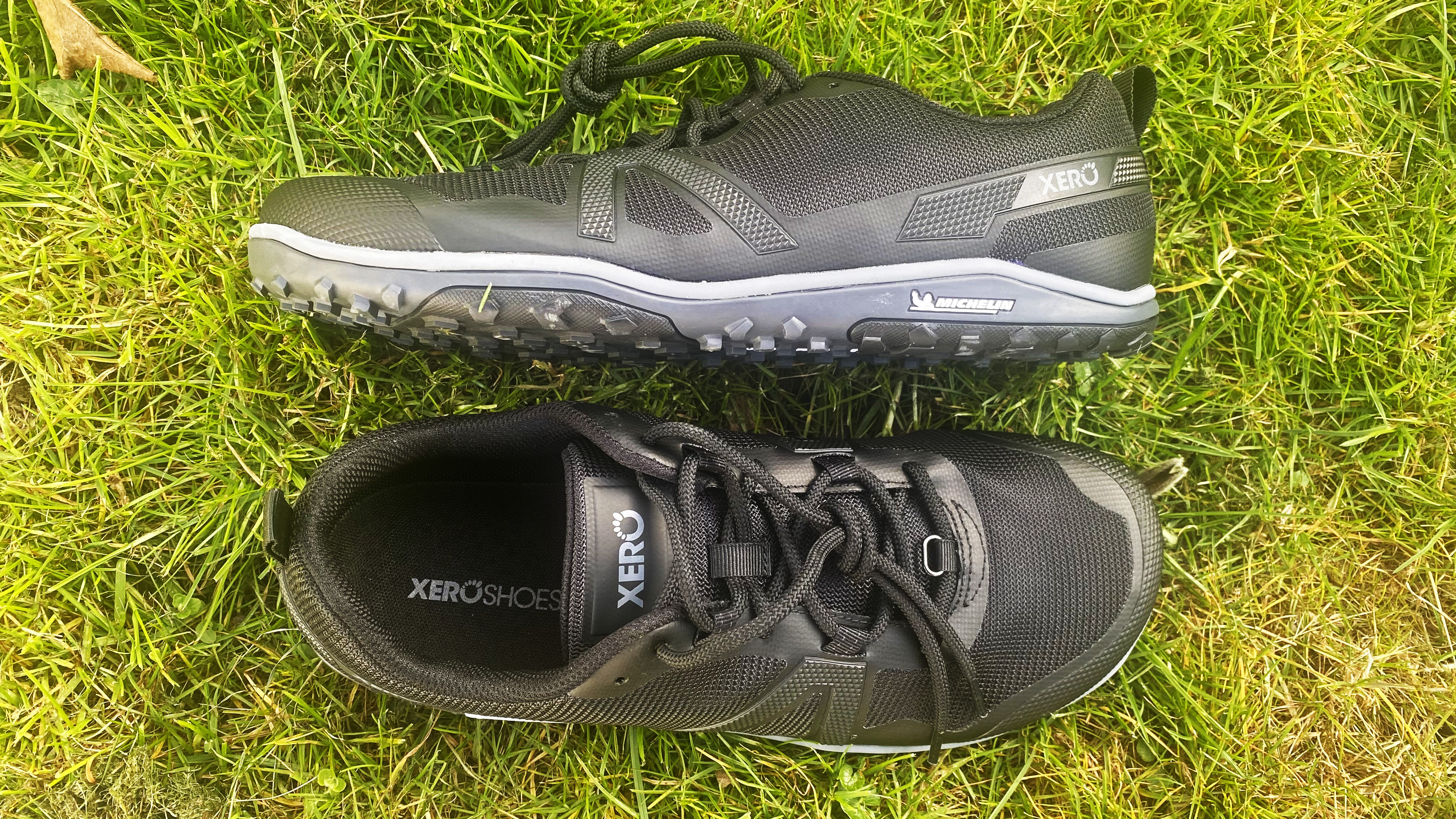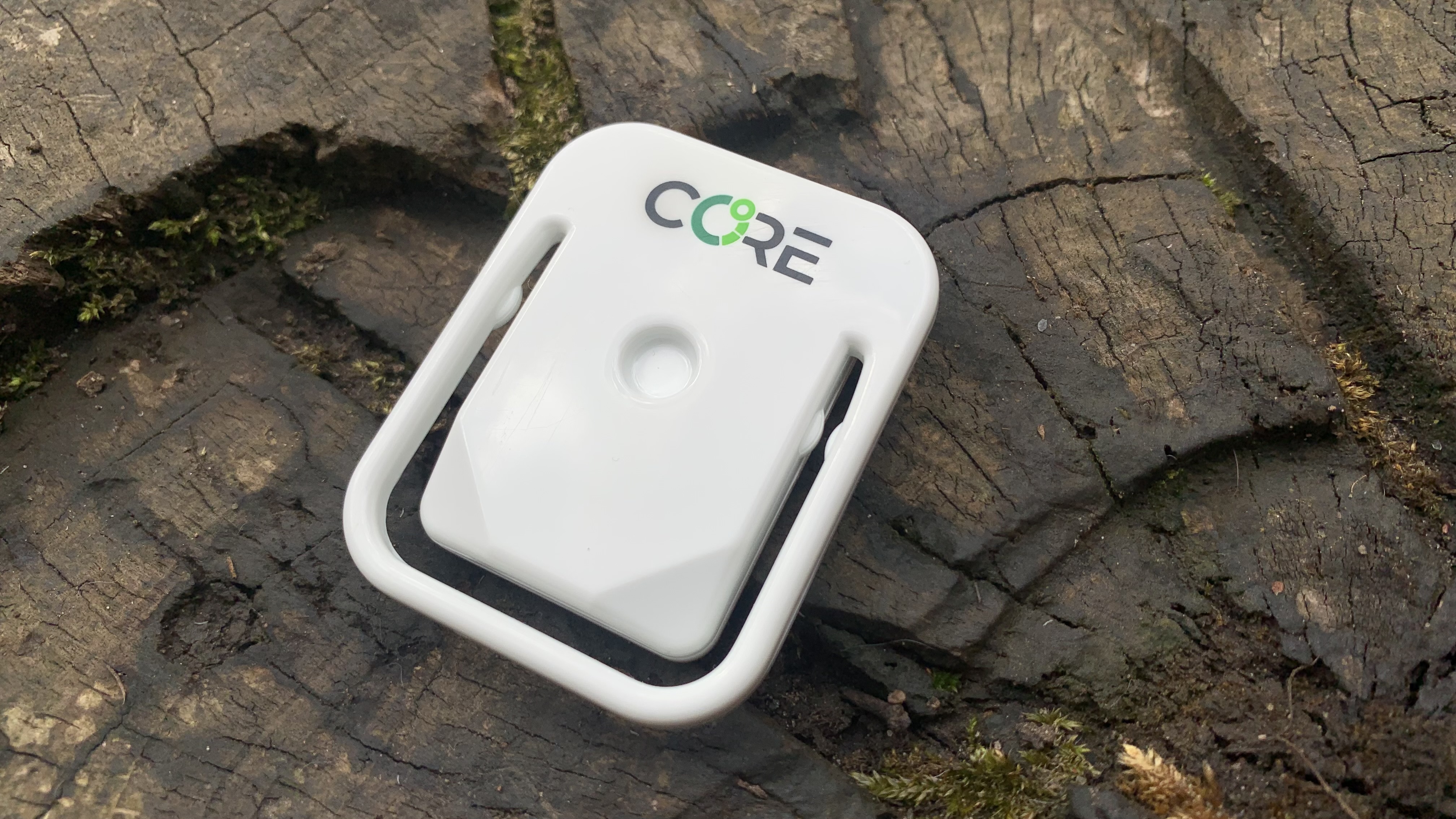Advnture Verdict
Well made (although, unfortunately, without the use of recycled synthetics) the Xero Scrambler Low EVs are a genuine all-terrain shoe that provide a laid-back barefoot ride, allowing feet and toes to spread and balancing extremely subtle cushioning with good levels of trail feel. Likewise, the lugs on the Michelin outsoles are large enough to do their job, but not so big they become painful on hard surfaces. There is a hot point below the ankle, which can rub skin away and become very sore, but this can me mitigated with dab of petroleum jelly. With a new and hardier material used in the upper, these versatile shoes should also last for much longer than their predecessor.
Pros
- +
More durable upper
- +
Grippy outsole
- +
Wide toe box
- +
Ultra light
- +
Loads of trail feel
- +
Removable insole
Cons
- -
New material a bit abrasive on bare skin
- -
Can slip on smooth, wet surfaces
- -
No recycled materials used
- -
Pricey
You can trust Advnture
US-based brand Xero has made a name for itself since launching in 2009, by producing some of the best barefoot shoes on the market, not just for trail runners, but also wild amblers and ramblers.
Having already spent some time testing the original Xero Scrambler Low, a very good all-terrain barefoot shoe for fair-weather running or hiking across a wide variety of terrain, I was interested in seeing what Xero had done to improve the design and performance of this shoe.
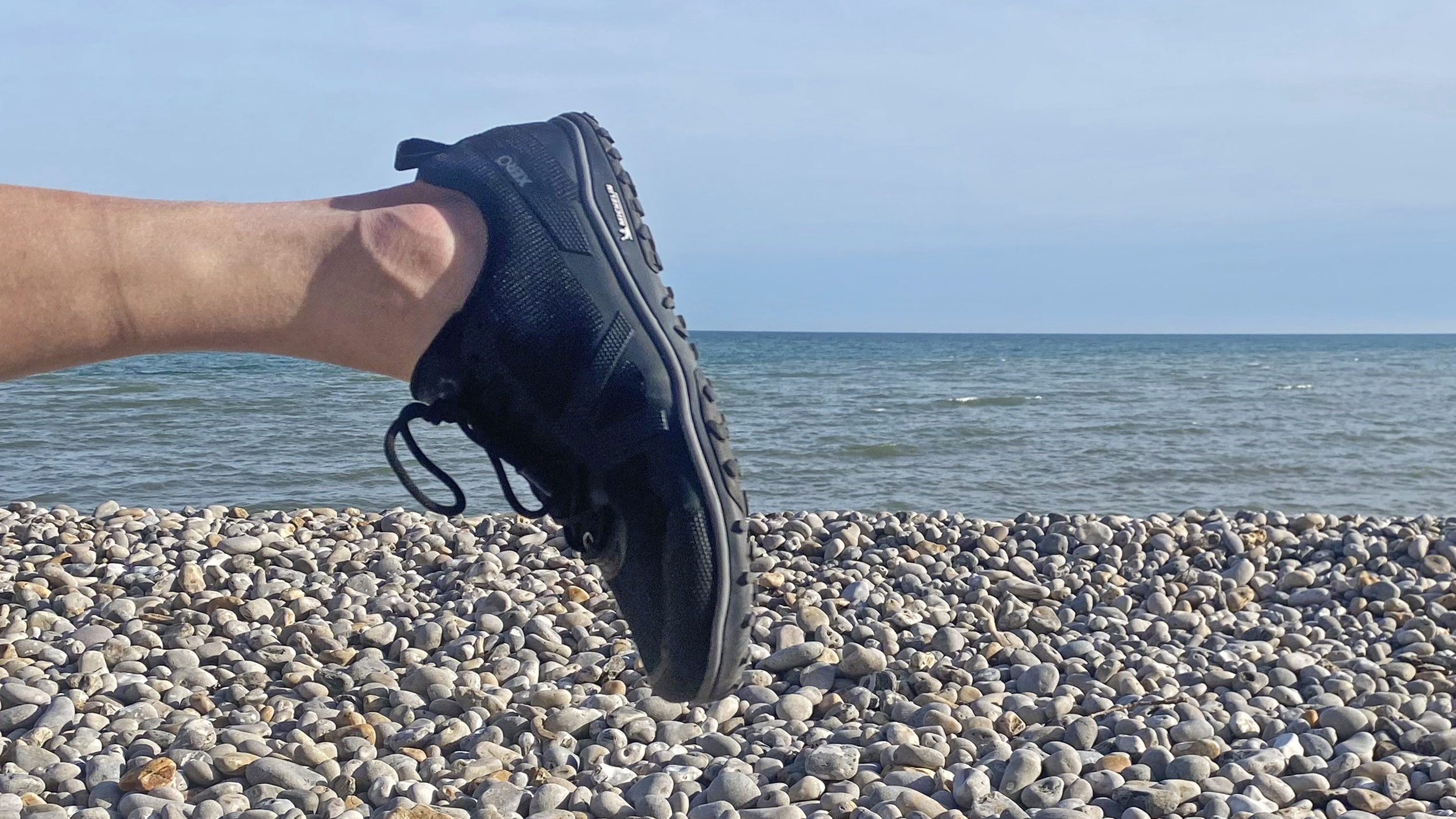
To begin with, however, I was a little mystified, because the new EV version of the Scrambler looks almost identical to its predecessor. This wasn’t helped by the fact that I was, once again, testing the Scramblers in black – I should note at this point that, for this version, there is another exciting colorway available: the rather exotic-sounding Dark Irish cream & sunny lime. When I looked into it a bit more, I realised the major change to this shoe is in the material used in the upper.
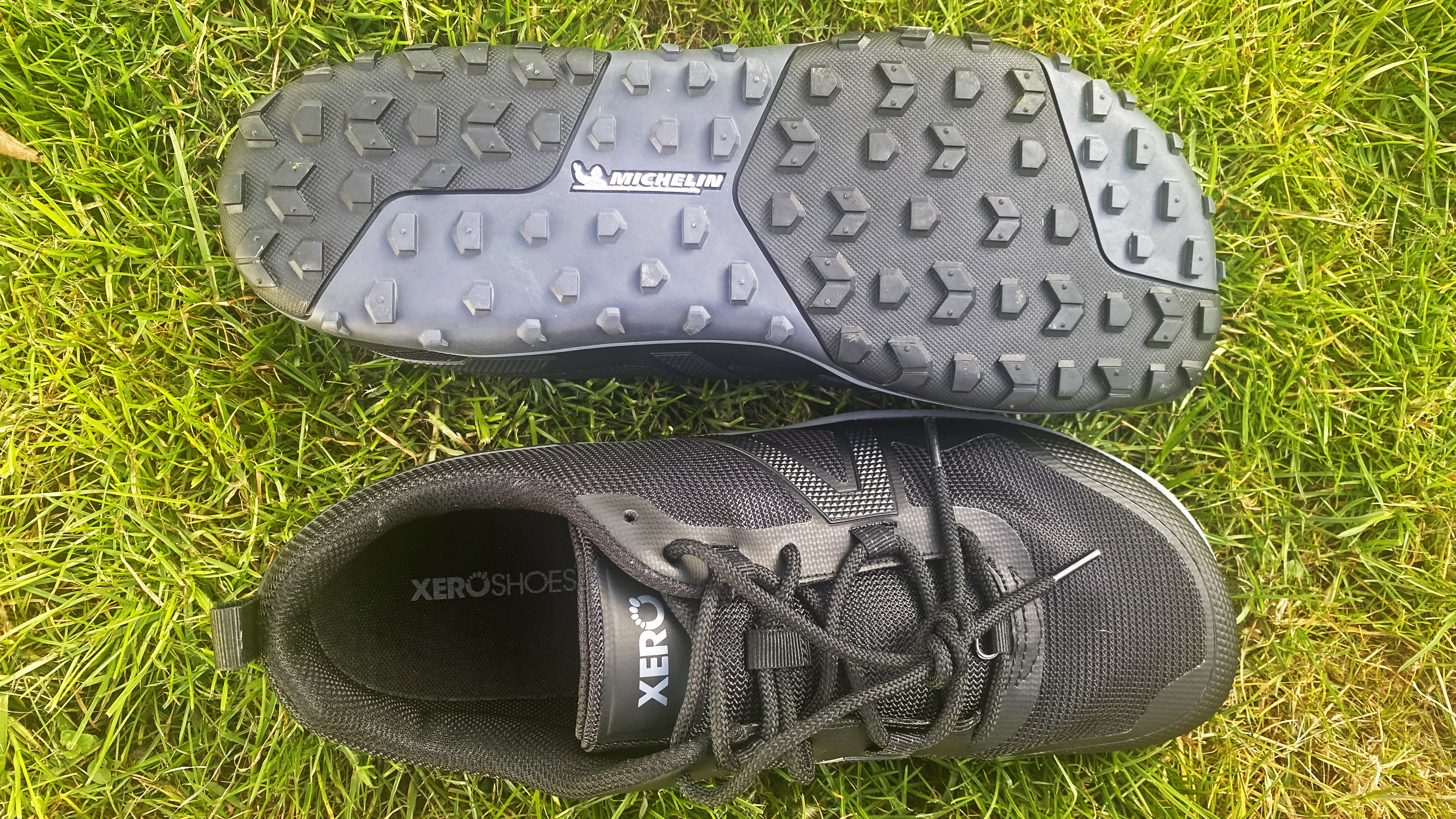
Design and Materials
Let’s start with the main update to this shoe, which is in the material used in the upper. The original Scrambler won praise for the quality and durability of the Michelin outsole, but the upper often failed to last as long. There is a weak spot on the chassis of this shoe and the Mesa Trails above the ball of the foot (right at the top of the toes), where the material has a tendency to split – and once that happens the shoe is destined for landfill. To its credit, Xero has listened to the feed back about this, and have used a new synthetic material here: a tight-weave, abrasion-resistant mesh that promises to last much longer.
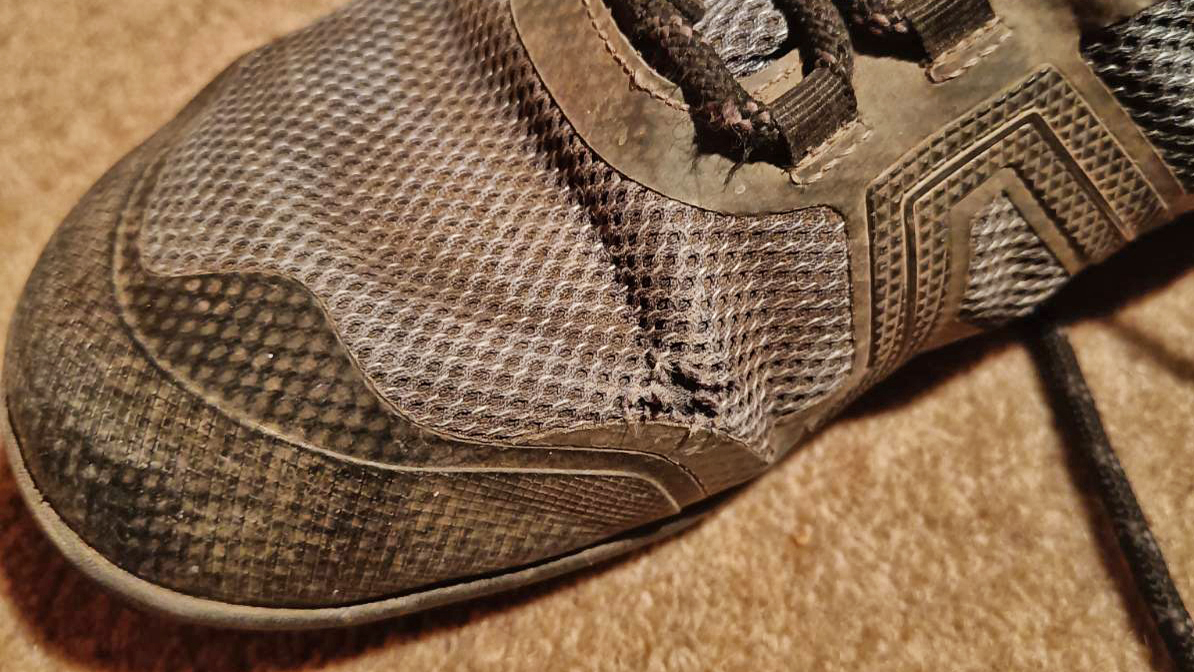
The stack is also very slightly bigger than on the previous Scrambler, having climbed from 10mm to 12mm, and this might put off some ultra-orthodox barefooters (if so, they would do well to check out the Xero Mesa Trail). As with the originals, these shoes come with a removable inner – you can leave this in for a bit of cushioning or, for the fundamentalists, take it out and soak up the extra feedback from the trail. Despite the stack, and regardless of whether you use the inner or ditch it, there is still zero heel-to-toe drop on the new Scrambler EV.
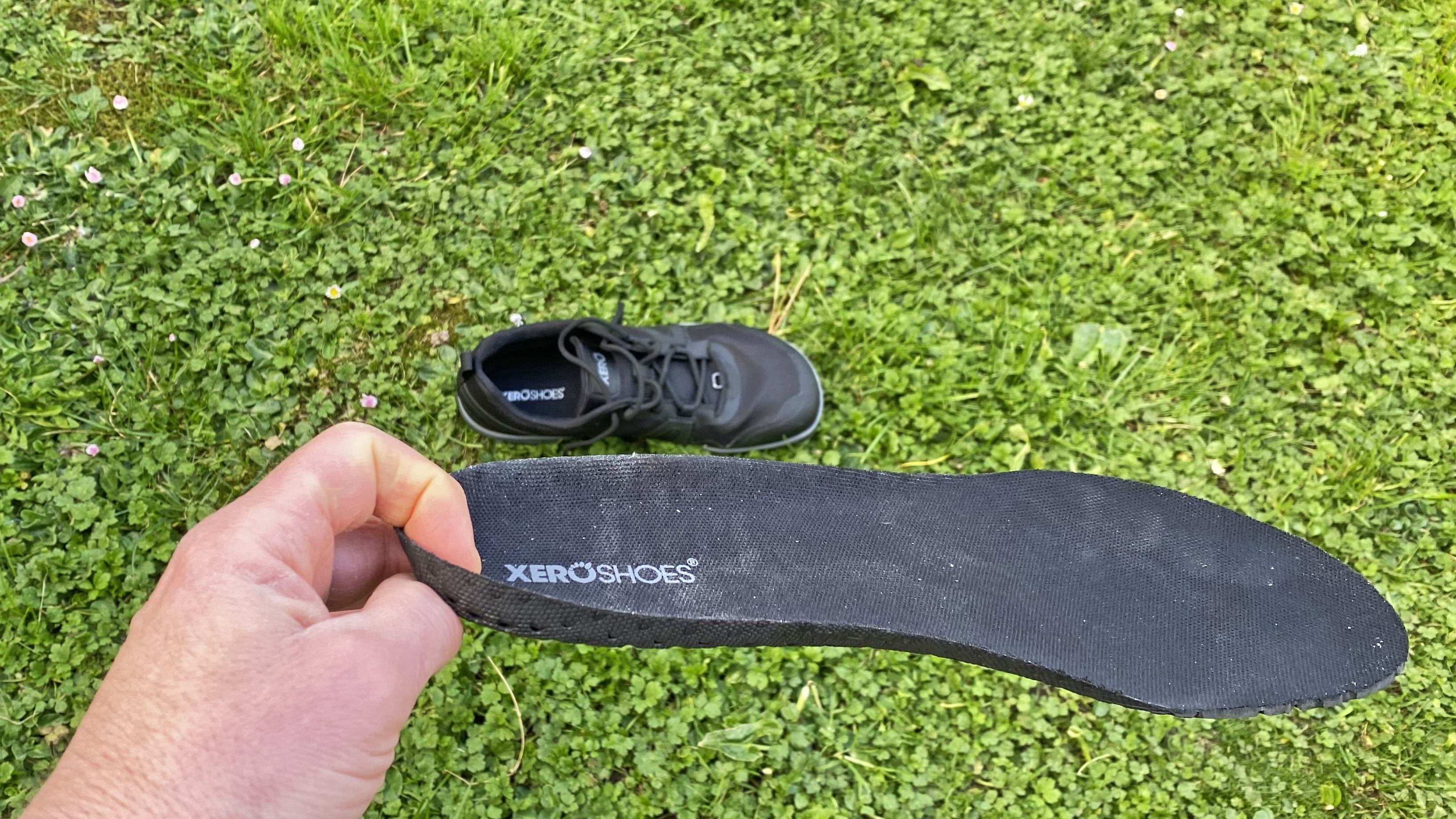
Most other elements of the shoe remain essentially the same, because, well, if it ain’t broke, no need to fix it. The Michelin-made outsole is still made tough, with embedded TrailFoam to provide a little bit of return and 3mm lugs that are comfortable to run on no matter what the conditions underfoot are like.
The Scrambler Low EV features a reasonably wide and genuinely foot-shaped toe box, giving your pinkies plenty of room to spread when you are running on the trails.
List price: $149.99 (US)/ £150 (UK)
Weight (per shoe, men’s size US 11.5): 302g / 10.7oz
Stack height: 12mm
Drop: 0mm
Upper: Synthetic mesh
Outsole: Michelin Fiberlite with embedded TrailFoam
Lugs: 3mm
Colors: Black / Dark Irish cream & sunny lime
Compatibility: Mixed terrain running, hiking and scrambling
These are pretty minimalist shoes by design, and there isn’t much in the way of protection for your ankles or sole. There is a vague hint of a toe cap, which supplies a tiny bit of buffering. I don’t, however, recommend toe-punting any large stones if you can possibly help it, or wearing the Scramblers while swinging an axe or sledgehammer, for that matter.
The Scramblers remain very bendy, and are lightweight, easy to pack running shoes to travel with. Sadly, no recycled materials appear to have been used in this entirely synthetic (vegan-friendly) shoe.
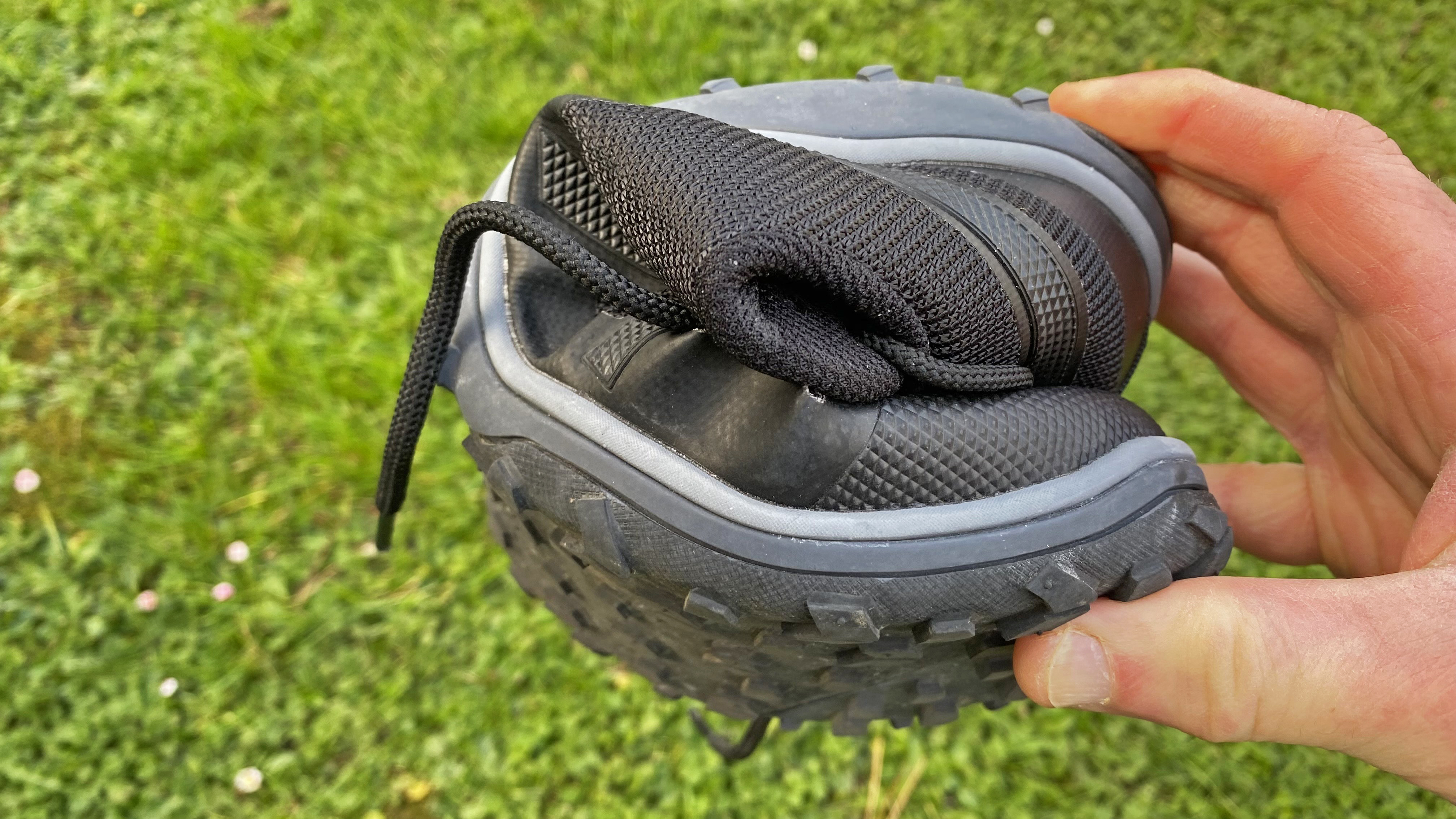
On the trails
I have been running on the tricky trails and pebbly and boulder-strewn beaches of the South West while wearing the new Xero Scrambler EV shoes for the last couple of months and, on the whole, I’ve been impressed (albeit with two small sores and one largish caveat).
Once again, I’ll start with the updates, which I found to be a very mixed blessing. I am not an ultra-orthodox barefoot runner, and I quite enjoy both the existence of a small stack on these shoes, and the inclusion of an insole that supplies a (very) slight amount of suspension. The Scramblers are designed and promoted as all-terrain shoes, and I think they live up to that name, with the modest lugs providing enough grip to keep you upright on all sorts of slippery surfaces, while still allowing lots of trail feel. Likewise the small stack and subtle insole both let feedback to keep coming loud and clear through the sole, but I found they also empowered me to cut loose and to go hard on boulders and lumpy hard ground without crippling myself.
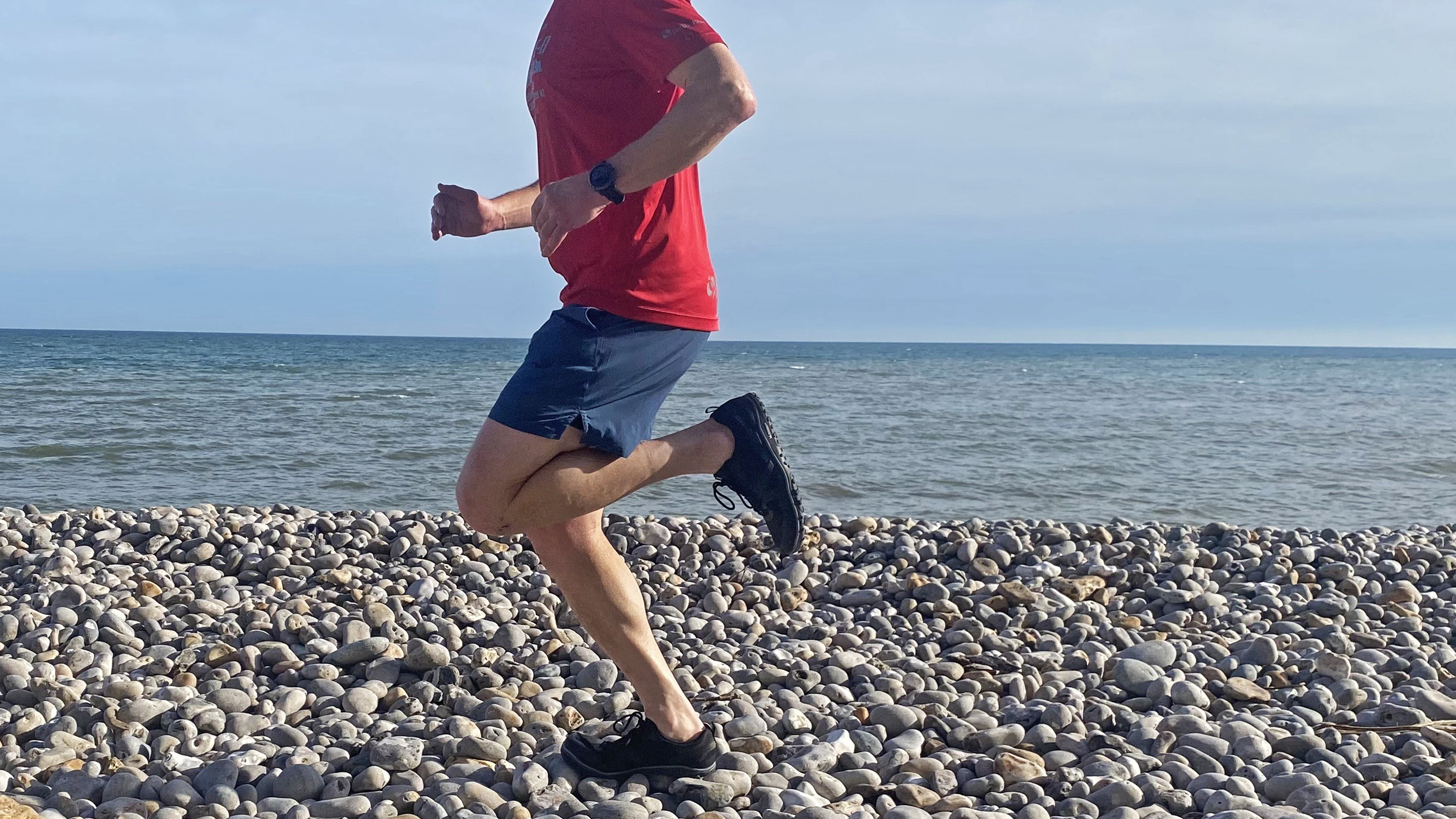
When it comes to the new material used in the chassis, however, I’m less enthusiastic. I appreciate the extra durability (no one wants to fork out $150 for a new pair of shoes every few months, and it’s true that Xero shoes perish far too quickly above the ball of the foot) but I did find this denser weave material to be abrasive. I appreciate a good pair of running socks when using trail running shoes, but when I’m wearing barefoot shoes, I would rather go commando below the ankle, so I can let my toes spread and make the most of the trail feel. (Although, I appreciate that many people prefer to use socks when wearing barefoot running shoes.)
I had experienced excruciating rubbing issues when running sans socks in the waterproof version of the Xero Mesa Trail (a shoe that made no sense to me), but I’d had no such issues with the original Scrambler Lows. To my disappointment, the new fabric employed in the Scrambler EVs started rubbing my skin in identical points (just below the ankle on the inside of my foot) after a couple of miles. The rubbing wasn’t as severe as I experienced with the Mesa Trail WPs, but it was uncomfortable nonetheless. Maybe I’m just thin-skinned. Thankfully, I was able to sort it out and continue to run sockless by applying a bit of petroleum jelly.
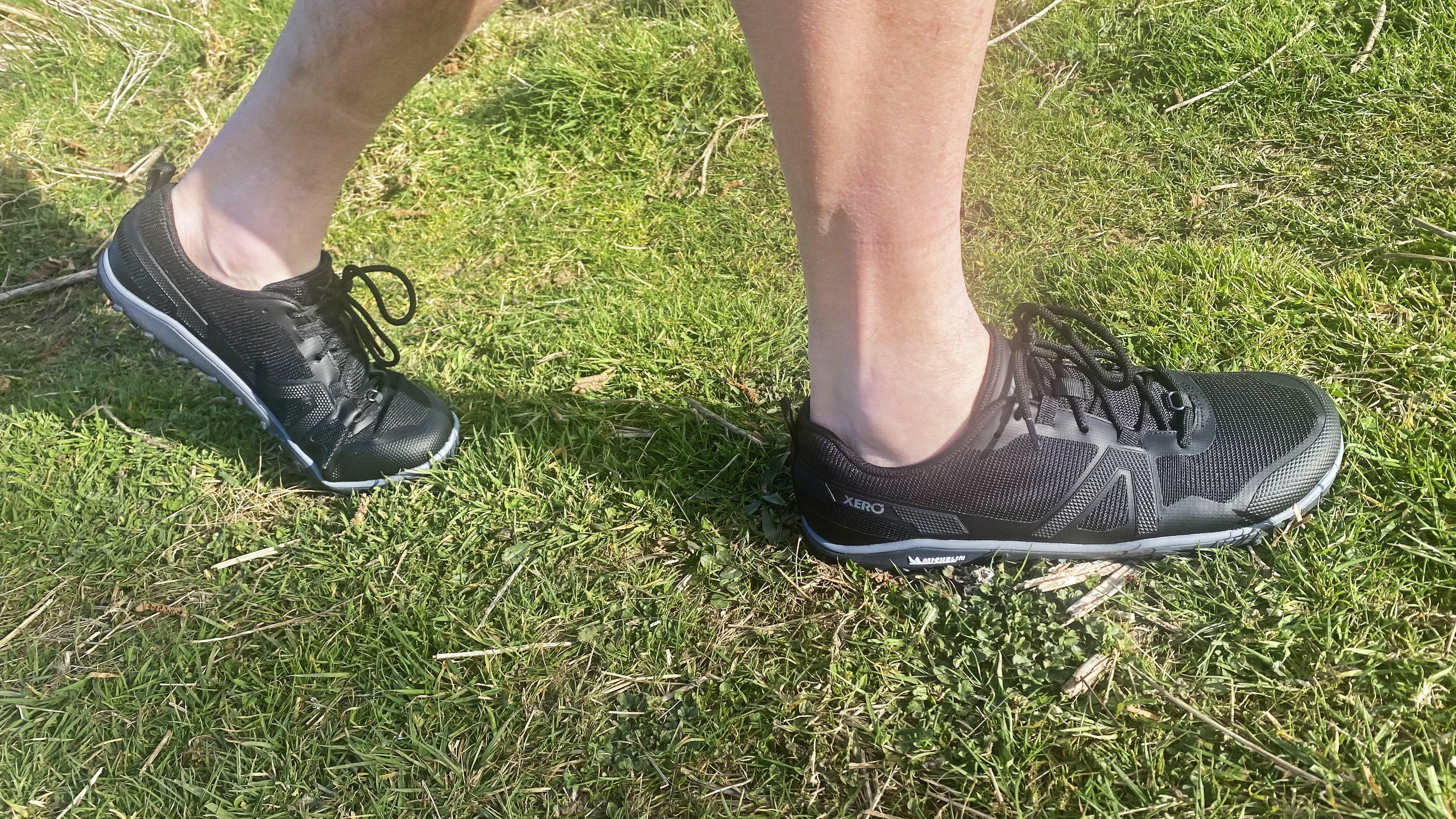
Aside from this annoyance, the Scrambler EVs have been impressive. The new mesh might be tougher (and rougher) but it still allows your feet to breathe. The wide toebox is very comfortable and the lacing system, which integrates with a midfoot strap (TPU wings on either side of the chassis), facilitating a firm foot hole, which gave me confidence on technical trails.
This confidence is backed up by the excellent Michelin outsole, where the chevron-shaped studs used in the tread are positioned in a multidirectional pattern, offering decent braking control during descents, and reliable traction when you’re steaming up hill. The rubber is quite hard, however, which means they’re prone to slipping on smooth, wet surfaces such as damp paving stones and logs. The rigidity of the tread does mean, however, that the lugs will likely last for a long time (the Scramblers come with a 5,000-mile sole warranty).
There is an extra pair of optional lace holes you can use in really boggy scenarios to avoid losing a shoe in the gloop, and a hook on the front for affixing gaiters in more challenging conditions (although I’m not sure I’d be wearing this shoe while messing about on snow and ice).
The toe protection is minimal, but better than nothing. My only other grumble is the fact that the tongue isn’t integrated, and sometimes allows grit and sand to get into the upper of the shoe.
Also consider
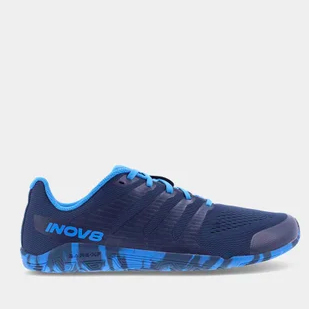
Featuring a 6mm-thick Boomerang footbed, but no heel-to-toe drop, the Bare-XFs from British trail specialists Inov8 are very comfortable barefoot shoes to wear without socks. They feature a supportive Met-Cradle, a midfoot sticky grip outsole and are made with a breathable mesh that drains fast, making them excellent for SwimRun adventures.
For
- Wide toe box
- Ultra light
- Lots of trail feel
Against
- Very little grip on slippery surfaces
- No recycled materials used
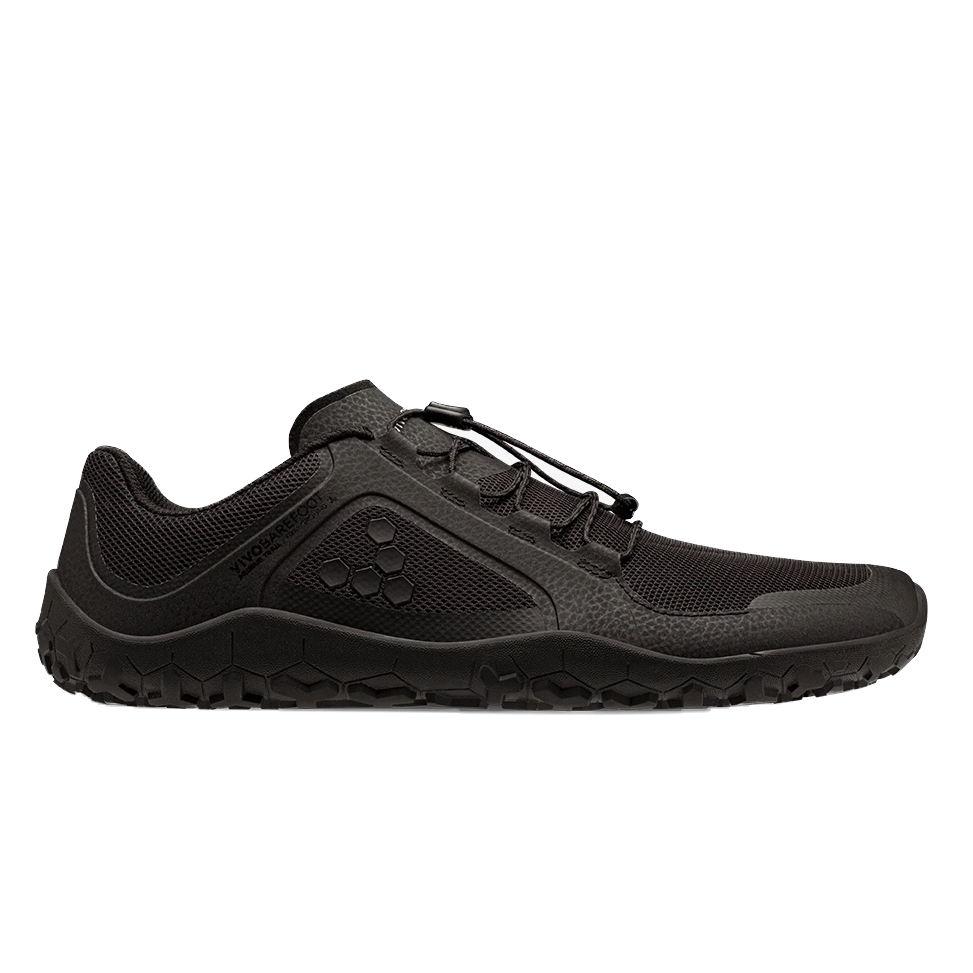
If you’re looking for a zero-drop barefoot shoe that leaves less of a footprint on the environment, the Primus Trail FG from Vivobarefoot is made entirely from recycled materials. It’s a lightweight, highly breathable, flexible shoe with good grip and excellent trail feel.
For
- Excellent trail feel
- Light
- Breath well
- Made from recycled materials
Against
- Too minimal for some – you’ll feel everything
- Wider than some feet require
- No choice of color

Author of Caving, Canyoning, Coasteering…, a recently released book about all kinds of outdoor adventures around Britain, Pat has spent 20 years pursuing stories involving boots, bikes, boats, beers and bruises. En route he’s canoed Canada’s Yukon River, climbed Mont Blanc and Kilimanjaro, skied and mountain biked through the Norwegian Alps, run an ultra across the roof of Mauritius, and set short-lived records for trail-running Australia’s highest peaks and New Zealand’s Great Walks. He’s authored walking guides to Devon and Dorset, and once wrote a whole book about Toilets for Lonely Planet. Follow Pat’s escapades on Strava here and Instagram here.
